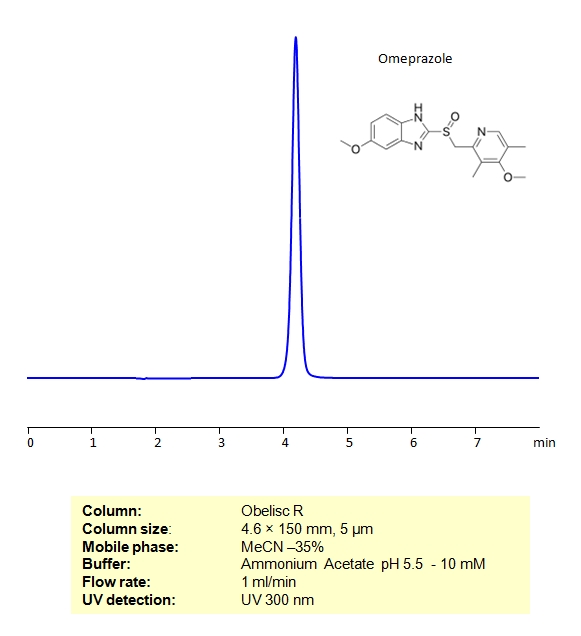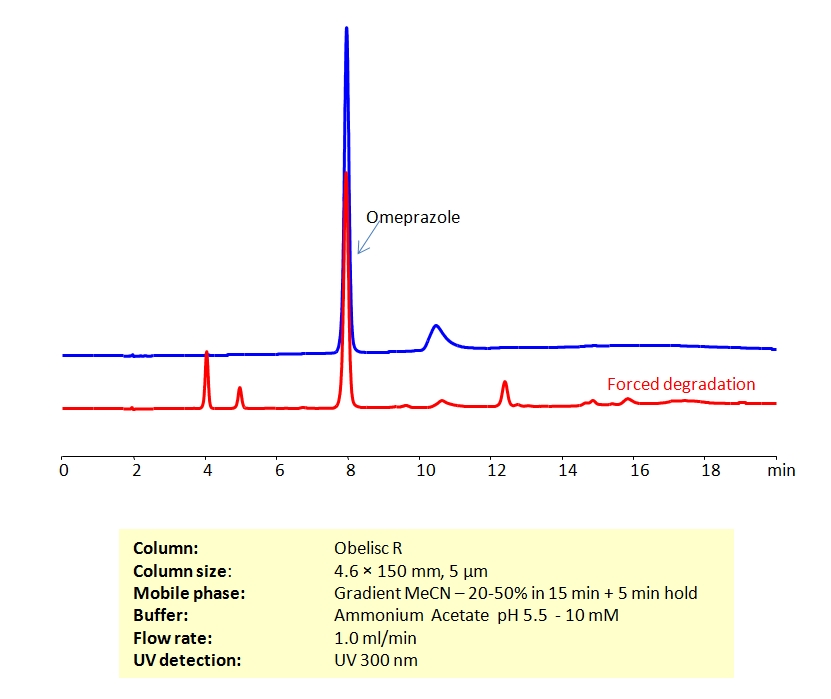HPLC Method for Omeprazole on Obelisc R by SIELC Technologies
| Column | Obelisc R, 4.6 x 150 mm, 5 µm, 100 A, dual ended |
| Mobile Phase | MeCN -35% |
| Buffer | Ammonium Acetate pH 5.5 – 10 mM |
| Flow Rate | 1.0 ml/min |
| Detection | UV 300 nm |
| Column | Obelisc R, 4.6 x 150 mm, 5 µm, 100 A, dual ended |
| Mobile Phase | Gradient MeCN -20-50% in 15 min + 5 min hold |
| Buffer | Ammonium Acetate pH 5.5 – 10 mM |
| Flow Rate | 1.0 ml/min |
| Detection | UV 300 nm |
High Performance Liquid Chromatography (HPLC) Method for Analysis of Omeprazole.
Omeprazole is a proton pump inhibitor (PPI) with the chemical formula C17H19N3O3S. It is a medication that decreases the amount of acid produced in the stomach. Omeprazole has a bactericidal effect on Helicobacter pylori.
Obelisc R column which has both positive and negative ion-pairs embedded in the stationary phase allows for fine tuning and separation of a wide range of compounds with different ionic properties. Omeprazole was separated isocratically using a simple MS-compatible mobile phase of acetonitrile (ACN) and water with Ammonium Acetate (AmAc) buffer. Can also be UV detected at 300nm.
| Class of Compounds |
Drug |
| Analyzing Compounds | Omeprazole |
Application Column
Obelisc R
Column Diameter: 4.6 mm
Column Length: 150 mm
Particle Size: 5 µm
Pore Size: 100 A
Column options: dual ended







